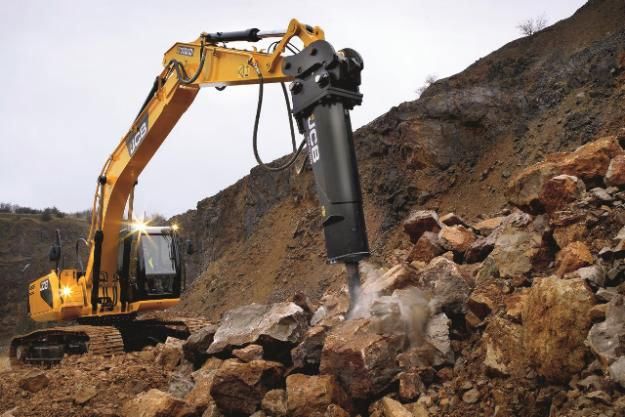Expert Septic Ohio - Relied On Septic System Professionals in Ohio
In-Depth Exploration: The Science Behind Superior Excavation Practices
The world of excavation methods is a domain where scientific research links with workmanship to unearth the mysteries hidden below the earth's surface. From ancient hand tools to modern-day hydraulic excavators, the advancement of excavation methods has actually been a testament to human ingenuity and technical innovations. What absolutely establishes remarkable excavation techniques apart is a deep understanding of geological concepts, combined with the use of innovative tools and methodologies. By discovering the scientific research behind these techniques, we can reveal the tricks that lie below our feet and appreciate the accuracy and competence that go into every dig.
Evolution of Excavation Strategies
Throughout history, the evolution of excavation strategies has actually played an important role in progressing building and construction methods and historical discoveries. From the fundamental tools used by our forefathers to the sophisticated equipment utilized in modern-day times, the progression of excavation methods has actually considerably changed how we come close to different tasks.
In ancient times, manual work with fundamental devices such as wheelbarrows, shovels, and pickaxes was the main approach of excavation. This labor-intensive procedure restricted the depth and extent of excavations, usually leading to slow-moving progress and limited access to specific websites. As people advanced, so did the tools and methods made use of for excavation.
The Industrial Change noted a transforming factor in excavation practices with the introduction of steam-powered machinery. In contemporary times, modern technology plays a crucial role in excavation, with innovations like General practitioner systems, drones, and 3D scanning improving accuracy and efficiency in the field.
Duty of Technology in Excavation

The integration of sophisticated innovation has actually basically transformed the field of excavation, improving accuracy and effectiveness to extraordinary levels - lancaster trenching. One of the key technical advancements that has dramatically affected excavation techniques is the utilization of GPS systems.
In addition, the introduction of 3D modeling and simulation software application has structured the preparation process for excavation jobs. Designers and operators can currently visualize the entire excavation procedure prior to breaking ground, enhancing and recognizing potential challenges process. Combined with this, the execution of drones in excavation activities has assisted in airborne studies, volumetric measurements, and website examinations with unmatched rate and precision.
Geological Principles in Excavation
An understanding of geological principles is crucial for guaranteeing the structural stability and security of excavation websites. Geological variables play an essential function in figuring out the expediency and safety and security of excavation tasks (excavating ohio). One essential geological principle to think about is the kind of soil or rock present at the site. Different dirt kinds, such as sand, clay, or this link crushed rock, have varying degrees of security and need different excavation methods. For example, cohesive dirts like clay might need extra support to stop collapses, while sandy soils might be vulnerable to disintegration during excavation.
In addition, the geological structure of the area, consisting of faults, cracks, and rock developments, should be meticulously evaluated to recognize prospective risks and obstacles. Excavating near geological fault or unsteady rock developments can cause instability and potential dangers. By conducting thorough geological studies and analysis, excavators and engineers can establish strategies to alleviate risks and make sure the successful completion of excavation tasks. Eventually, including geological principles right into excavation practices is vital for achieving risk-free, reliable, and sustainable outcomes.

Most Current Devices for Excavation
In the world of excavation techniques, contemporary developments in devices have actually reinvented the effectiveness and precision of excavation procedures. These drones can offer comprehensive airborne studies of excavation sites, supplying real-time information on topography and potential hazards.
An additional cutting-edge tool gaining appeal is the application of 3D printing technology for developing custom-made excavation equipment. This enables the production of specialized devices that are tailored to the specific requirements of a project, raising efficiency and reducing downtime.
Additionally, innovations in products science have actually led to the growth of stronger and a lot more resilient excavation tools. excavating ohio. Tungsten carbide-tipped excavator add-ons, as an example, deal superior performance in tough ground conditions, improving productivity on-site
Science's Effect on Excavation Practices

Moreover, improvements in materials scientific research have actually resulted in the creation of more powerful, a lot more sturdy excavation devices and equipment. The use of composite products in miners and shovels has boosted their performance and long life, eventually increasing performance on excavation sites. In addition, scientific study on soil technicians and geotechnical engineering has given important understandings into dirt habits, allowing excavation experts to make informed decisions regarding excavation techniques and soil stabilization strategies. Generally, scientific research remains to drive technology and improvement in excavation methods, making excavation tasks much more reliable, affordable, and lasting.

Verdict
Finally, the advancement of excavation methods has been significantly influenced by advancements in technology and a much deeper understanding of geological concepts. The most up to date tools and tools made use of in excavation have improved efficiency and accuracy in the field. The application of scientific expertise has actually considerably enhanced excavation techniques, bring about a lot more sustainable and efficient approaches for excavating numerous sorts of materials.
In the world of excavation techniques, modern technologies in devices have actually reinvented the effectiveness and click to read precision of excavation processes. By leveraging scientific concepts, the excavation sector has actually been able to substantially enhance effectiveness, accuracy, and safety in excavation procedures. GPR enables excavation teams to non-invasively scan and map subsurface frameworks, energies, and prospective risks, enabling them to plan excavation projects with greater accuracy and minimized danger of accidents.
In addition, clinical research on dirt auto mechanics and geotechnical engineering has actually supplied important insights right into soil behavior, permitting excavation experts to make informed choices concerning excavation approaches and dirt stabilization strategies. Generally, science proceeds to drive development and improvement in excavation methods, making excavation projects extra effective, cost-efficient, and lasting.